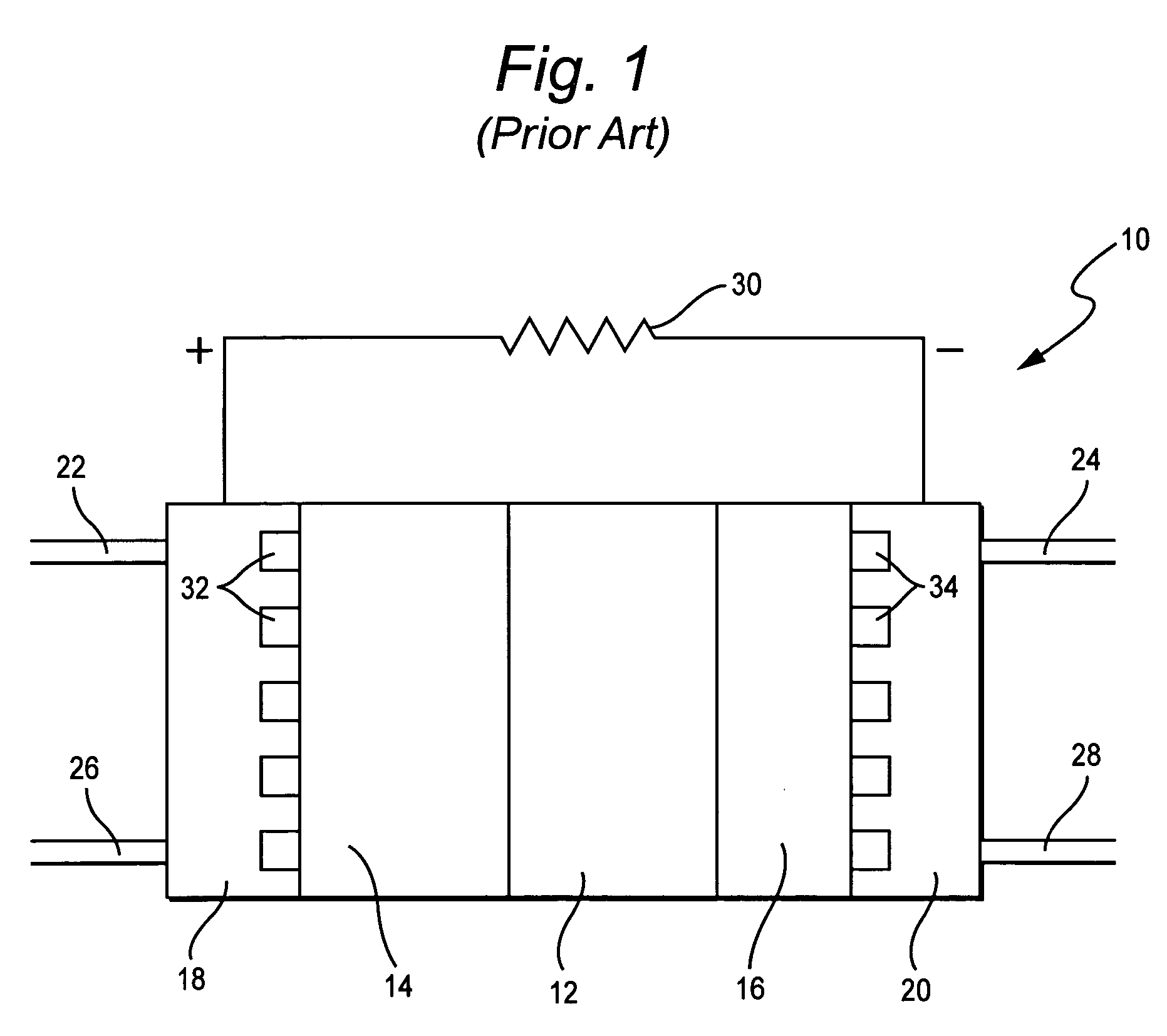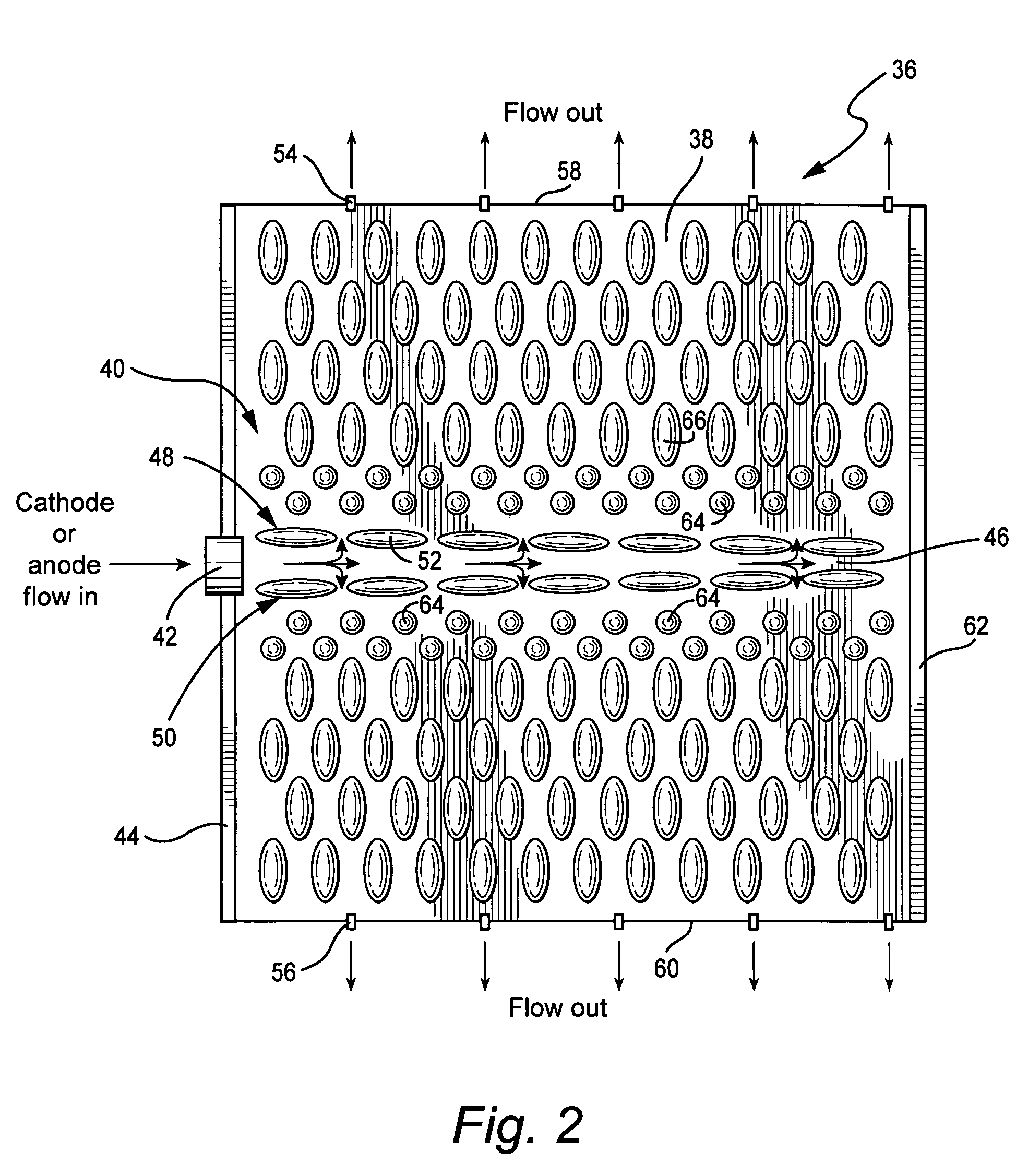Flow field design for high fuel utilization fuel cells
- Summary
- Abstract
- Description
- Claims
- Application Information
AI Technical Summary
Benefits of technology
Problems solved by technology
Method used
Image
Examples
Embodiment Construction
[0031] A schematic diagram of a typical solid oxide fuel cell stack is depicted in FIG. 1. For simplicity, however, FIG. 1 shows only one cell in the stack. The cell 10 comprises an electrolyte-electrode assembly that includes a solid oxide electrolyte 12 sandwiched between a cathode 14 and an anode 16. During operation, oxidant (typically air) and fuel (typically hydrogen) are supplied to flow field plates 18, 20 respectively at inlets 22, 24. The oxidant and fuel streams exhaust from stack 10 at outlets 26, 28. During operation, power is delivered to a load depicted as resistor 30.
[0032] Flow fields are incorporated into distribution or flow channels 32, 34 that are formed in the flow field plates 18, 20 for delivery of reactants directly to surfaces of cathode and anode in the outflow direction.
[0033] Referring to FIG. 2, a flow field design for a fuel cell flow channel 36 formed in a flow field plate 18 or 20 is illustrated in schematic form. The flow field 38 includes a flat ...
PUM
 Login to View More
Login to View More Abstract
Description
Claims
Application Information
 Login to View More
Login to View More - R&D
- Intellectual Property
- Life Sciences
- Materials
- Tech Scout
- Unparalleled Data Quality
- Higher Quality Content
- 60% Fewer Hallucinations
Browse by: Latest US Patents, China's latest patents, Technical Efficacy Thesaurus, Application Domain, Technology Topic, Popular Technical Reports.
© 2025 PatSnap. All rights reserved.Legal|Privacy policy|Modern Slavery Act Transparency Statement|Sitemap|About US| Contact US: help@patsnap.com



